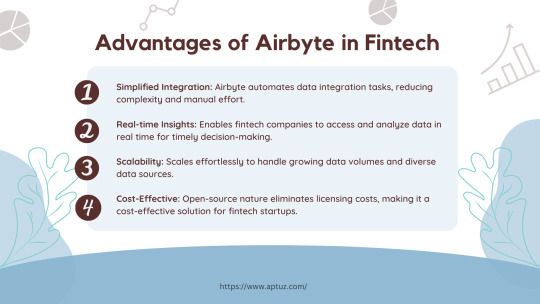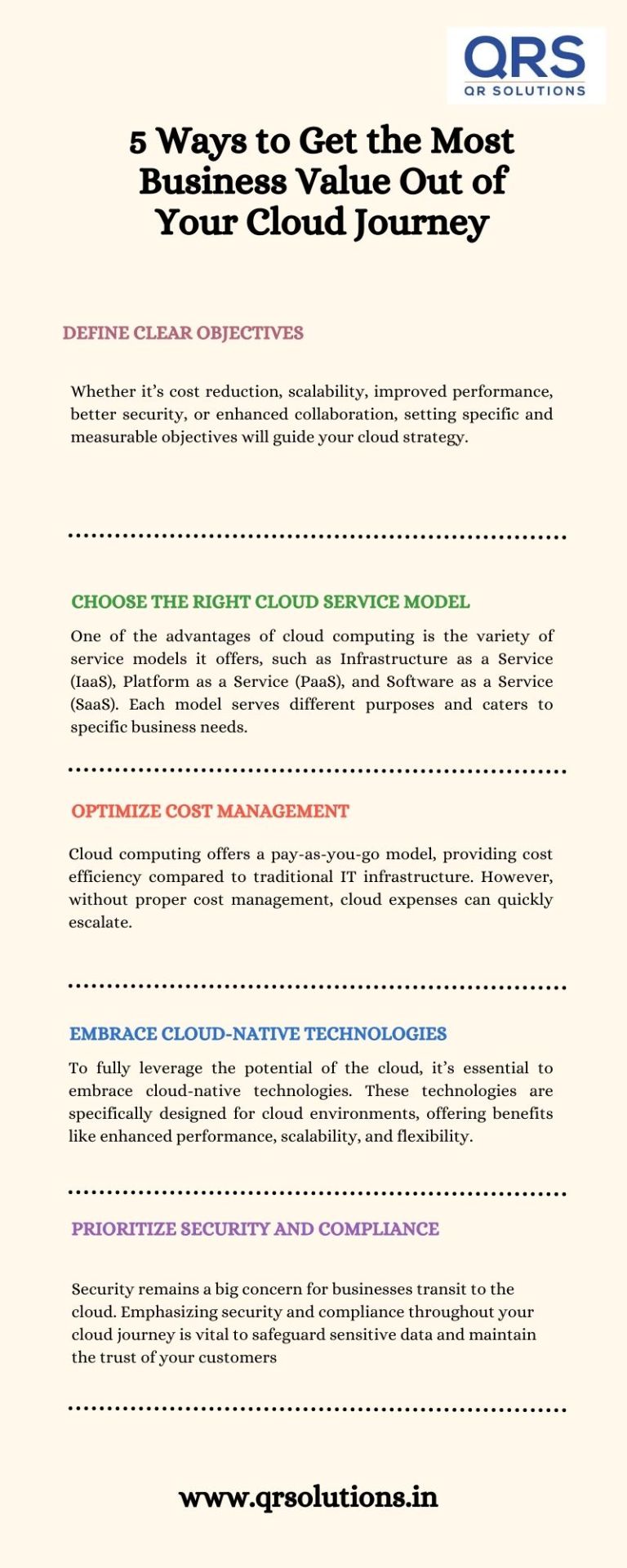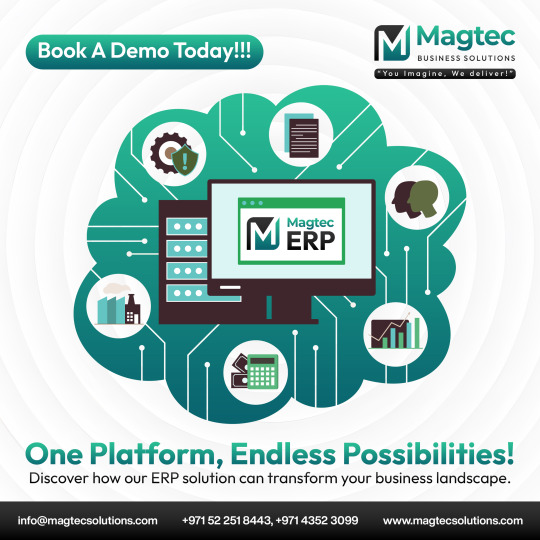#Cloud data Management
Explore tagged Tumblr posts
Text
How Do Lean Data Governance and ISO Standards improve Cloud Data Management ?
In today’s fast-evolving digital landscape, organizations are increasingly relying on cloud data management to store, process, and analyze massive volumes of information. However, without a structured data governance framework, companies risk poor data quality, security breaches, and non-compliance with industry regulations. This is where Lean Data Governance and ISO Standards come into play, offering a strategic approach to optimizing data management while ensuring compliance and efficiency.
youtube
The Importance of Lean Data Governance in Cloud Management
Lean Data Governance focuses on minimizing redundancies, improving data accuracy, and fostering a culture of accountability. Unlike traditional data governance models that can be rigid and cumbersome, Lean Data Governance aligns with agile methodologies, making it adaptable to cloud environments.
Some key benefits of Lean Data Governance include:
Enhanced Data Quality: Ensuring accurate, complete, and consistent data across cloud platforms.
Improved Compliance: Adhering to ISO standards, GDPR, and other regulatory frameworks.
Optimized Cost Efficiency: Reducing storage waste and improving cloud resource utilization.
Faster Decision-Making: Providing high-quality data for AI, analytics, and business intelligence.
Role of ISO Standards in Cloud Data Management
ISO standards provide globally recognized guidelines to enhance data security, privacy, and governance in the cloud. Some essential ISO standards for cloud data management include:
ISO/IEC 27001: Information security management system (ISMS) for safeguarding cloud data.
ISO/IEC 38505–1: Governance of data for cloud-based applications.
ISO/IEC 8000: Ensuring high-quality, accurate, and reliable data.
By implementing these standards, organizations can establish trust, mitigate risks, and align their data management strategies with industry best practices.
How Lean Data Governance & ISO Standards Work Together
Combining Lean Data Governance with ISO standards creates a powerful synergy that optimizes cloud data management. Lean principles streamline data operations, while ISO compliance ensures security, consistency, and regulatory adherence. This integrated approach empowers businesses to:
Eliminate data silos and inconsistencies.
Strengthen cybersecurity measures against potential threats.
Improve operational efficiency and scalability in cloud environments.
Learn More: Watch the Full Video
This video breaks down the core principles of Lean Data Governance and ISO Standards, offering real-world use cases and actionable insights to help organizations refine their cloud data management strategies.

Final Thoughts
As cloud adoption continues to grow, organizations must prioritize Lean Data Governance and ISO Standards to ensure seamless data management. By implementing these best practices, businesses can achieve greater data quality, security, and compliance, paving the way for long-term success in the digital era.
Stay ahead of the curve by adopting Lean Data Governance & ISO Standards today!
For more expert insights, don’t forget to watch the full video: Click Here and subscribe to our PiLog Group YouTube Channel for more valuable content!
#Lean Data Governance#Data Cloud#Cloud Data Management#iso standard#youtube#piloggroup#data management solutions#big data#iso certification#data governance#data analytics#data scientist#Youtube
0 notes
Text
Cloud data management is essential for businesses in today’s competitive landscape. By 2028, cloud computing will be vital for business success, providing accessibility, scalability, cost efficiency, security, and disaster recovery. Key trends shaping the future of cloud data management include AI and machine learning integration for predictive analytics, hybrid cloud solutions blending on-premises and cloud systems, edge computing for real-time data processing, and quantum storage for enhanced data capacity and security. Additionally, advanced data governance will help businesses comply with regulations like GDPR and HIPAA. Stigasoft offers expert cloud solutions, ensuring scalability, security, and efficiency for data-driven success. Contact them today to explore how their services can optimize your data management.
If you want to get complete information related to this topic click HERE.
#cloud data management#DataStorageSolutions#BusinessDataStrategy#datasecurity#scalablestorage#cloud services#AIinCloud#cloudtechnology#futureofdata#CostEfficientCloud#CloudForBusiness#cloud security#Stigasoft
0 notes
Text
As businesses grapple with increasing data volumes, "Data Management as a Service" (DMaaS) emerges as a crucial solution for effective data handling. This article explores the importance of DMaaS in modern data management, breaking down the different types, including cloud-based, on-premises, and hybrid options. Discover the many benefits DMaaS offers, from reduced overhead costs to enhanced data accuracy and compliance. This guide is perfect for organizations looking to streamline their data processes, safeguard sensitive information, and leverage their data for strategic decision-making.
0 notes
Text

Streamline and optimize your data management with our comprehensive cloud data management. Unlock the power of efficient data handling and storage. Contact us today.
0 notes
Text
Supercharge Your Data: Advanced Optimization and Maintenance for Delta Tables in Fabric
Dive into the final part of our series on optimizing data ingestion with Spark in Microsoft Fabric! Discover advanced optimization techniques and essential maintenance strategies for Delta tables to ensure high performance and efficiency in your data Ops
Welcome to the third and final installment of our blog series on optimizing data ingestion with Spark in Microsoft Fabric. In our previous posts, we explored the foundational elements of Microsoft Fabric and Delta Lake, delving into the differences between managed and external tables, as well as their practical applications. Now, it’s time to take your data management skills to the next…
#Advanced Techniques#Apache Spark#Big Data#Cloud Data Management#Data Compaction#Data Efficiency#Data Maintenance#Data management#Data Optimization#Data Performance#Data Retention#Data Scalability#Delta Lake#File Size Optimization#Handling Deletes#Merge Optimization#Microsoft Fabric#Optimize Write#Partition Pruning#Real-Time Data#Schema Evolution#Vacuum Command#Z-Ordering
0 notes
Text

Explore the advantages of Airbyte in fintech! Learn how this platform automates data integration, provides real-time insights, scales seamlessly, and is cost-effective for startups. Discover how Airbyte simplifies data workflows for timely decision-making in the fintech industry.
Know more at: https://bit.ly/3UbqGyT
#data#data warehouse#data integration#technology#fintech#data analytics#data engineering#airbyte#ETL#ELt#Cloud data Management#Cloud Data
0 notes
Text

Rawcubes' multi-cloud data management solution allows you to flexibly deploy your data across any cloud infrastructure or service with a simple click.
0 notes
Text

In today’s fast-paced digital landscape, the cloud has emerged as a transformative technology that empowers businesses with flexibility, scalability, and cost-effectiveness. Migrating to the cloud is no longer an option but a necessity to stay competitive.
#Cloud migration strategies#Business value optimization#Cloud journey best practices#Cloud adoption benefits#Cost-effective cloud utilization#Cloud-native applications#Cloud scalability#Hybrid cloud solutions#Cloud security measures#Cloud cost management#Cloud performance monitoring#Cloud vendor selection#Cloud infrastructure optimization#Cloud data management#Agile cloud transformation
0 notes
Text

407 notes
·
View notes
Text
Abathur

At Abathur, we believe technology should empower, not complicate.
Our mission is to provide seamless, scalable, and secure solutions for businesses of all sizes. With a team of experts specializing in various tech domains, we ensure our clients stay ahead in an ever-evolving digital landscape.
Why Choose Us? Expert-Led Innovation – Our team is built on experience and expertise. Security First Approach – Cybersecurity is embedded in all our solutions. Scalable & Future-Proof – We design solutions that grow with you. Client-Centric Focus – Your success is our priority.
#Software Development#Web Development#Mobile App Development#API Integration#Artificial Intelligence#Machine Learning#Predictive Analytics#AI Automation#NLP#Data Analytics#Business Intelligence#Big Data#Cybersecurity#Risk Management#Penetration Testing#Cloud Security#Network Security#Compliance#Networking#IT Support#Cloud Management#AWS#Azure#DevOps#Server Management#Digital Marketing#SEO#Social Media Marketing#Paid Ads#Content Marketing
2 notes
·
View notes
Text
Business Managed IT Support
From cloud platforms to managed IT services, scalable solutions help you innovate, reduce downtime, and drive productivity. The result? A business that’s ready for anything the market throws your way. www.centurygroup.net/

#CloudComputing #ManagedIT #Innovation
#managed it services#cybersecurity#it services#data backup#cloud technology services#managed service provider
2 notes
·
View notes
Text
In 2024, Enterprise Data Management (EDM) is rapidly evolving with key trends shaping the landscape. AI and Machine Learning are central to automating data management tasks, enhancing efficiency, and enabling real-time data processing. Governance and compliance, driven by regulations like GDPR, are top priorities, requiring robust data policies and continuous auditing. The demand for cloud data management services is surging, with hybrid cloud solutions addressing security and flexibility concerns. Edge computing is revolutionizing data processing by reducing latency and enabling real-time insights, particularly for IoT. DataOps is also rising, streamlining data operations and improving collaboration. These trends help businesses manage data effectively and maintain competitiveness in a dynamic digital environment.
If you want to get complete information related to this topic click HERE.
#stigasoft#EnterpriseDataManagement#datamanagement#clouddataservices#AIinDataManagement#cloud data management#datasecurity
0 notes
Text

Transform your business with Magtec ERP! 🌐✨ Discover endless possibilities on a single platform. Book a demo today and see how we can elevate your operations to the next level! 🚀📈
#magtec#magtecerp#magtecsolutions#erp#businesssolutions#digitaltransformation#innovation#technology#growth#efficiency#productivity#cloud#automation#management#software#enterprise#success#analytics#customization#scalability#integration#teamwork#collaboration#strategy#data#support#consulting#businessdevelopment#transformation#leadership
4 notes
·
View notes
Text
Efficient GPU Management for AI Startups: Exploring the Best Strategies
The rise of AI-driven innovation has made GPUs essential for startups and small businesses. However, efficiently managing GPU resources remains a challenge, particularly with limited budgets, fluctuating workloads, and the need for cutting-edge hardware for R&D and deployment.
Understanding the GPU Challenge for Startups
AI workloads—especially large-scale training and inference—require high-performance GPUs like NVIDIA A100 and H100. While these GPUs deliver exceptional computing power, they also present unique challenges:
High Costs – Premium GPUs are expensive, whether rented via the cloud or purchased outright.
Availability Issues – In-demand GPUs may be limited on cloud platforms, delaying time-sensitive projects.
Dynamic Needs – Startups often experience fluctuating GPU demands, from intensive R&D phases to stable inference workloads.
To optimize costs, performance, and flexibility, startups must carefully evaluate their options. This article explores key GPU management strategies, including cloud services, physical ownership, rentals, and hybrid infrastructures—highlighting their pros, cons, and best use cases.
1. Cloud GPU Services
Cloud GPU services from AWS, Google Cloud, and Azure offer on-demand access to GPUs with flexible pricing models such as pay-as-you-go and reserved instances.
✅ Pros:
✔ Scalability – Easily scale resources up or down based on demand. ✔ No Upfront Costs – Avoid capital expenditures and pay only for usage. ✔ Access to Advanced GPUs – Frequent updates include the latest models like NVIDIA A100 and H100. ✔ Managed Infrastructure – No need for maintenance, cooling, or power management. ✔ Global Reach – Deploy workloads in multiple regions with ease.
❌ Cons:
✖ High Long-Term Costs – Usage-based billing can become expensive for continuous workloads. ✖ Availability Constraints – Popular GPUs may be out of stock during peak demand. ✖ Data Transfer Costs – Moving large datasets in and out of the cloud can be costly. ✖ Vendor Lock-in – Dependency on a single provider limits flexibility.
🔹 Best Use Cases:
Early-stage startups with fluctuating GPU needs.
Short-term R&D projects and proof-of-concept testing.
Workloads requiring rapid scaling or multi-region deployment.
2. Owning Physical GPU Servers
Owning physical GPU servers means purchasing GPUs and supporting hardware, either on-premises or collocated in a data center.
✅ Pros:
✔ Lower Long-Term Costs – Once purchased, ongoing costs are limited to power, maintenance, and hosting fees. ✔ Full Control – Customize hardware configurations and ensure access to specific GPUs. ✔ Resale Value – GPUs retain significant resale value (Sell GPUs), allowing you to recover investment costs when upgrading. ✔ Purchasing Flexibility – Buy GPUs at competitive prices, including through refurbished hardware vendors. ✔ Predictable Expenses – Fixed hardware costs eliminate unpredictable cloud billing. ✔ Guaranteed Availability – Avoid cloud shortages and ensure access to required GPUs.
❌ Cons:
✖ High Upfront Costs – Buying high-performance GPUs like NVIDIA A100 or H100 requires a significant investment. ✖ Complex Maintenance – Managing hardware failures and upgrades requires technical expertise. ✖ Limited Scalability – Expanding capacity requires additional hardware purchases.
🔹 Best Use Cases:
Startups with stable, predictable workloads that need dedicated resources.
Companies conducting large-scale AI training or handling sensitive data.
Organizations seeking long-term cost savings and reduced dependency on cloud providers.
3. Renting Physical GPU Servers
Renting physical GPU servers provides access to high-performance hardware without the need for direct ownership. These servers are often hosted in data centers and offered by third-party providers.
✅ Pros:
✔ Lower Upfront Costs – Avoid large capital investments and opt for periodic rental fees. ✔ Bare-Metal Performance – Gain full access to physical GPUs without virtualization overhead. ✔ Flexibility – Upgrade or switch GPU models more easily compared to ownership. ✔ No Depreciation Risks – Avoid concerns over GPU obsolescence.
❌ Cons:
✖ Rental Premiums – Long-term rental fees can exceed the cost of purchasing hardware. ✖ Operational Complexity – Requires coordination with data center providers for management. ✖ Availability Constraints – Supply shortages may affect access to cutting-edge GPUs.
🔹 Best Use Cases:
Mid-stage startups needing temporary GPU access for specific projects.
Companies transitioning away from cloud dependency but not ready for full ownership.
Organizations with fluctuating GPU workloads looking for cost-effective solutions.
4. Hybrid Infrastructure
Hybrid infrastructure combines owned or rented GPUs with cloud GPU services, ensuring cost efficiency, scalability, and reliable performance.
What is a Hybrid GPU Infrastructure?
A hybrid model integrates: 1️⃣ Owned or Rented GPUs – Dedicated resources for R&D and long-term workloads. 2️⃣ Cloud GPU Services – Scalable, on-demand resources for overflow, production, and deployment.
How Hybrid Infrastructure Benefits Startups
✅ Ensures Control in R&D – Dedicated hardware guarantees access to required GPUs. ✅ Leverages Cloud for Production – Use cloud resources for global scaling and short-term spikes. ✅ Optimizes Costs – Aligns workloads with the most cost-effective resource. ✅ Reduces Risk – Minimizes reliance on a single provider, preventing vendor lock-in.
Expanded Hybrid Workflow for AI Startups
1️⃣ R&D Stage: Use physical GPUs for experimentation and colocate them in data centers. 2️⃣ Model Stabilization: Transition workloads to the cloud for flexible testing. 3️⃣ Deployment & Production: Reserve cloud instances for stable inference and global scaling. 4️⃣ Overflow Management: Use a hybrid approach to scale workloads efficiently.
Conclusion
Efficient GPU resource management is crucial for AI startups balancing innovation with cost efficiency.
Cloud GPUs offer flexibility but become expensive for long-term use.
Owning GPUs provides control and cost savings but requires infrastructure management.
Renting GPUs is a middle-ground solution, offering flexibility without ownership risks.
Hybrid infrastructure combines the best of both, enabling startups to scale cost-effectively.
Platforms like BuySellRam.com help startups optimize their hardware investments by providing cost-effective solutions for buying and selling GPUs, ensuring they stay competitive in the evolving AI landscape.
The original article is here: How to manage GPU resource?
#GPU Management#High Performance Computing#cloud computing#ai hardware#technology#Nvidia#AI Startups#AMD#it management#data center#ai technology#computer
2 notes
·
View notes
Text
Unlock Powerful Data Strategies: Master Managed and External Tables in Fabric Delta Lake
Are you ready to unlock powerful data strategies and take your data management skills to the next level? In our latest blog post, we dive deep into mastering managed and external tables in Delta Lake within Microsoft Fabric.
Welcome to our series on optimizing data ingestion with Spark in Microsoft Fabric. In our first post, we covered the capabilities of Microsoft Fabric and its integration with Delta Lake. In this second installment, we dive into mastering Managed and External tables. Choosing between managed and external tables is a crucial decision when working with Delta Lake in Microsoft Fabric. Each option…
#Apache Spark#Big Data#Cloud Data Management#Data Analytics#Data Best Practices#Data Efficiency#Data Governance#Data Ingestion#Data Insights#Data management#Data Optimization#Data Strategies#Data Workflows#Delta Lake#External Tables#Managed Tables#microsoft azure#Microsoft Fabric#Real-Time Data
0 notes
Text

Zero ETL is an innovative approach that minimizes the traditional complexities of ETL processes by eliminating the transformation step. Instead, data is extracted from source systems and loaded directly into the target database without undergoing extensive transformations.
Know more at: https://bit.ly/3JtGqbN
#fintech#technology#finance#data analytics#data engineering#Cloud Data Management#Cloud Data#ETL#ZeroETL
0 notes